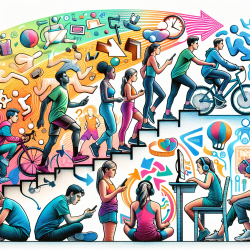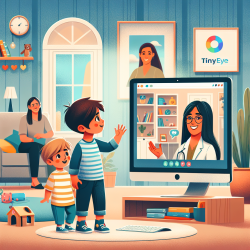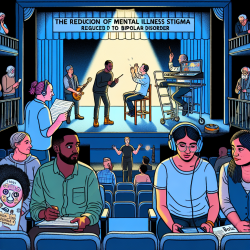Introduction
In today's fast-paced digital world, adolescents are spending more time in sedentary activities, which poses significant health risks. The research article "Time spent in different sedentary activity domains across adolescence: a follow-up study" provides valuable insights into the changing patterns of sedentary behavior among Brazilian adolescents from 2015 to 2017. This study highlights the importance of understanding these patterns to promote healthier lifestyles and improve educational outcomes.
Key Findings
The study followed 586 adolescents aged 12 to 15 years from public schools in Curitiba, Brazil. It assessed their time spent in various sedentary activities, including screen-time, educational, cultural, social, and transportation domains. Here are some key findings:
- Overall sedentary time remained stable, but screen-time decreased by 22.22 minutes per day.
- Time spent on educational, cultural, and social activities increased, indicating a shift in sedentary preferences.
- Girls engaged less in screen-time and more in educational, cultural, and social activities compared to boys.
- Older adolescents and those with higher parental education levels spent more time in educational and cultural activities.
- Active adolescents spent less time on screen-time, especially during weekends.
Implications for Practitioners
For practitioners working with adolescents, these findings offer several opportunities to improve their skills and interventions:
- Encourage Diverse Activities: Promote a balance between screen-time and other sedentary activities like reading, arts, and social interactions to foster cognitive and social development.
- Promote Physical Activity: Encourage adolescents to engage in physical activities, which can reduce screen-time and improve overall health.
- Tailor Interventions: Design interventions that consider gender differences and the influence of parental education on adolescents' sedentary behavior.
- Integrate Technology Wisely: Recognize the role of smartphones and other digital devices in adolescents' lives and integrate them into educational and cultural activities positively.
Future Research Directions
While this study provides valuable insights, it also highlights areas for further research:
- Include Smartphone Usage: Future studies should consider the impact of smartphones on screen-time and overall sedentary behavior.
- Longitudinal Studies: Conduct more longitudinal studies to track changes in sedentary behavior over time and across different cultural contexts.
- Intervention Effectiveness: Evaluate the effectiveness of interventions aimed at reducing sedentary behavior and promoting physical activity among adolescents.
By implementing these strategies and encouraging further research, practitioners can play a crucial role in transforming sedentary behavior patterns among adolescents, ultimately leading to healthier and more productive lives.
To read the original research paper, please follow this link: Time spent in different sedentary activity domains across adolescence: a follow-up study.










